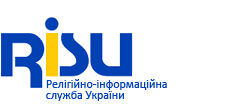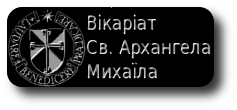
History of the Neocatechumenate Movement
Category:
- Neocatechumenate
The Neocatechumenate movement was launched to assist the Church renew herself in response to Vatican II. The movement holds that in reaction to the great changes in our society - particularly secularism - the Church must gradually become more of a community and return to the example of the early Christians.
They celebrate the Eucharist with unleavened bread. Their Masses last at least two hours. They gather in communities and have created a grass-roots network for evangelization. To spread the Gospels, these itinerant catechists go into houses and through the streets. Hundreds of their families have left on mission to various parts of the world, and diocesan missionary priests are trained in their seminaries. They are the offspring of the Second Vatican Council and their retort to secularism has been forceful - and successful. Their "Way" is a return to the first Christian communities. More than 50% of their members have entered the movement from outside the Church. In spite of opposition from parish priests and bishops, John Paul II, as Paul VI and John Paul I before him, supports them vigorously. We are speaking of the Neocatechumenate movement - a reality which now includes more than 13,500 communities in 4,000 parishes and 650 dioceses in more than 90 countries.
History of the Movement
Two dynamic Spaniards are the founders of the Neocatechumenate movement: Francisco Arguello, better known as Kiko, and Carmen Hernandez, who once studied to become a nun .
Born in 1939, the "existentialist" Spanish painter Kiko did not start out as a practicing - or even believing - Catholic. On November 2, 1980, recounting his history during his meeting with Pope John Paul II in the Martyred Canadian Saints parish in Rome, he stated: "God permitted me to experience the absurd - atheism - until he had mercy."
Upon his conversion, Kiko began to frequent catechism courses, and for years he also trained as a catechist. Finally, convinced of Christ's presence among the poor, he went to live with the poor of the Palomeras Atlas shanty town in Madrid. In 1964 he started his "Way," following in the footsteps of Charles de Foucauld. At this stage, Kiko's sole possessions were a guitar, a crucifix, and a Bible.
It was among the poor of Palomeras that Kiko encountered Carmen Hernandez; they joined forces to establish the bases for what they would eventually call the Neocatechumenate Way. Carmen Hernandez, who held degrees in Physics and Theology, had already been teaching for nearly eight years in a religious missionary institute. While awaiting a missionary assignment Bolivia, she had been living an analogous experience to Kiko's. One of Hernandez' main concerns had been the liturgical reforms instituted by Vatican II.
In 1968, Kiko and Carmen came to Rome where, with the support of Rome's Vicar-Bishop Cardinal Angelo dell'Acqua, they first launched their movement in the Canadian Martyrs' parish.
Their work soon aroused the interest of the Vatican's Congregation of the Liturgy and Sacraments. After a period of examination, the Congregation published a laudatory article in its official journal Notitiae.
A few years later, the Congregation officially defended the movement against accusations of heresy by a group of traditionalist Canadian priests.
One of the Congregation's advisors wrote in his report: "I would like to point out another aspect of this catechesis, or rather Neocatechumenate Way. As a historical scholar of ancient catechesis, I can say that Kiko's and Carmen's endeavor to realize the Catechumenate for our times has been successful. Personal experience has allowed them to intuit the profound validity of Church institutions in the first three centuries, permitting them to translate these into a new structure, which assumes the most important elements of early Christianity, yet employs them in a new context: conversion of the baptized who never made the personal choice of faith... I find all of this positive, and thereby conclude my judgment by inviting the responsible members of the Sacred Congregation of the Clergy to encourage this movement, guiding it with comprehension and paternal indulgence, so that it remain as it is - a service to authentically renovate the parish communities."
Years later, on May 9, 1986, Kiko and Carmen were summoned by the Congregation for the Doctrine of the Faith to respond to a series of questions regarding their views on hermeneutics, pastoral work and doctrine. After thorough study of their responses, Cardinal Joseph Ratzinger informed them that his Congregation wished to assist them, and proposed linking the movement to a Vatican congregation to provide a juridical basis. Kiko and Carmen fervently desired the official support of the Holy Father. As a result, John Paul II nominated Bishop Paul Josef Cordes, Vice-President of the Pontifical Council for the Laity, to act as the Pope's delegate ad personam to the movement and intermediary with the Vatican Congregations.
On August 30, 1990, Pope Wojtyla sent Cordes a letter appreciating the Neocatechumenate movement's "correctness and good intentions" and recognizing the movement as "a Catholic path and initiative which is valid for our times."
http://ourworld.compuserve.com/homepages/ronald_haynes/neocat1.htm
The Neocatechumenate is implemented in small, parish-based communities of between 20-50 people. There are around 40,000 such communities throughout the World, with an estimated 1 million members.
The Statutes of the Neocatechumenal Way were approved ad experimentum in 2002 and the Church gave final approval of the statutes on June 13, 2008.
http://en.wikipedia.org/wiki/Neocatechumenate
Their official web site is http://www.camminoneocatecumenale.it














